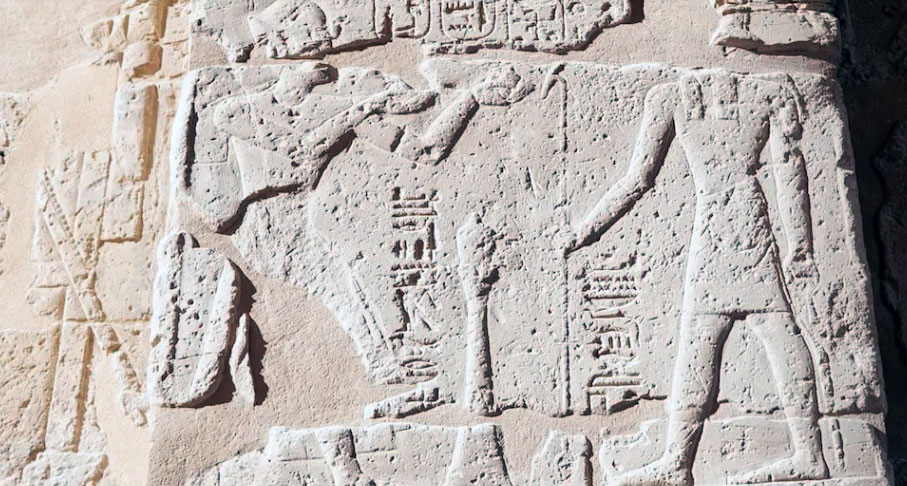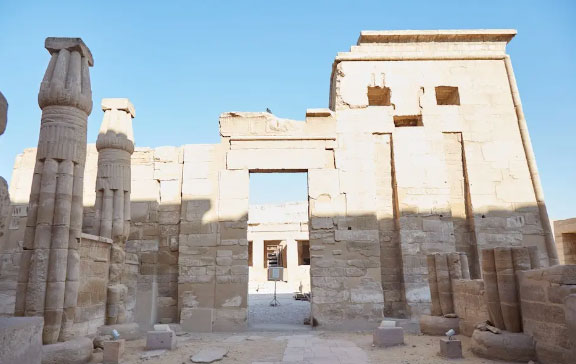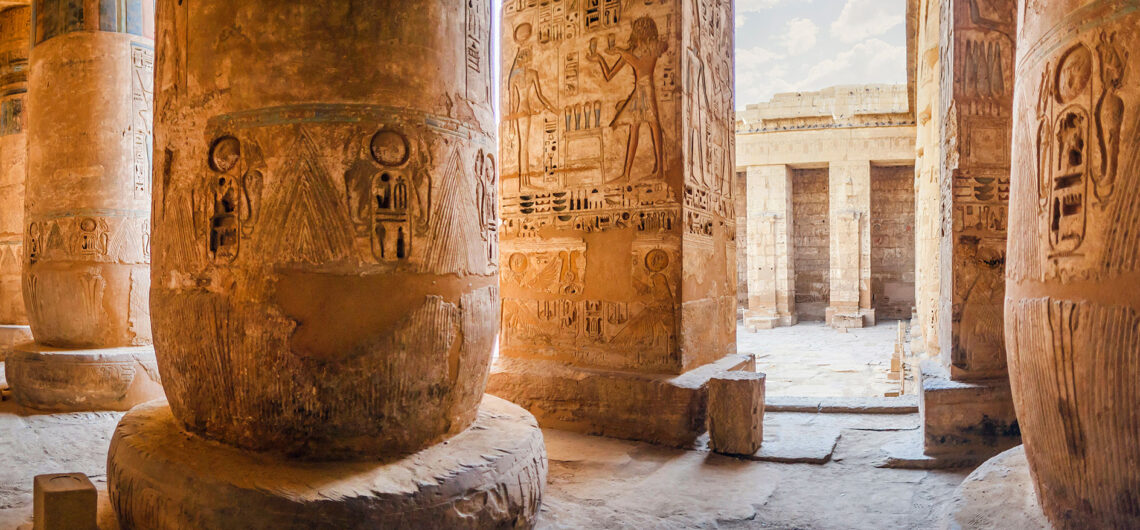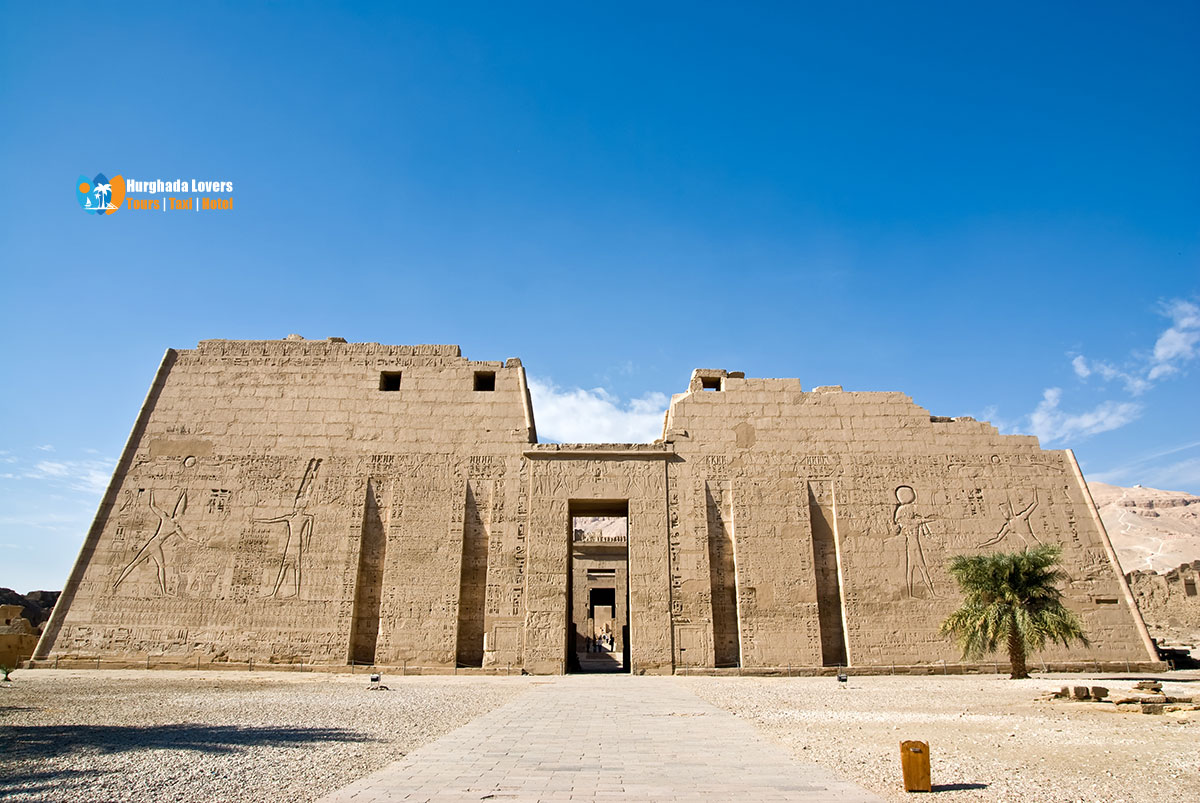Temple of Medinet Habu in Luxor Egypt | Temple of Ramesses III – Egyptian Temples
Discover the history of the Pharaonic civilization “Ancient Egypt History” in the construction of the funerary city of Habu, which was built during the reign of King Ramses III, one of the most famous ancient Egyptian Pharaohs kings.
Facts and secrets of building the largest Egyptian temples and fortified Pharaonic Egyptian Monuments in the Ancient Egypt civilization, what is the interior design of the temple, entrance ticket prices, visiting hours, and a complete map of the archaeological city of Habu to start your tourist trip to visit the tourist attractions in Egypt, in addition to learning about the tourist attractions in Luxor..
Temple of Medinet Habu Facts
It is considered one of the largest and most fortified Pharaonic funerary Mortuary Temples in the ancient Egyptian Pharaonic civilization and indicates the development of Sculpture in Ancient Egypt and Architecture in ancient Egypt
Temple area = 320 * 220 meters.
Height of the outer wall of the temple = 18 meters.
The temple contains 5 large statues of King Ramses III and his wives, such as Queen Tyti, the most famous queen of Pharaonic Egypt “Female Pharaohs“, in addition to 16 ruined statues, of which only the bases of the statues remain..

Who built the Temple of Habu?
King Ramses III of the Twentieth Egyptian Dynasty, The Ramesside Period, The New Kingdom of Egypt.
Engineer: Hapu, son of Thutmose III.
Construction Supervisor: Amun-Mes, General Supervisor of the Treasury of the Temple of Amun, the most famous of the ancient Egyptian deities – Ancient Egyptian gods and Goddesses in Thebes.
What is the reason for building the Temple of Habu?
The temple was built to worship the God Amun and the religious beliefs and Ancient Egyptian religion, such as the God Sekhmet, the god of war, and the God Osiris.
Recording the wars and victories of King Ramses III on the walls of the temple indicates his interest in developing the army Military of ancient Egypt to defend the southern, eastern and western borders of Egypt, as in the Geography of ancient Egypt.
Why is the Temple of Ramses III called the Temple of Habu?
The reason for the name goes back to the funerary city of Habu, which was built by King Ramses III in Thebes..
In the Coptic period, the second courtyard in the temple of Ramses III was used for Christian worship and there was a famous Coptic monk named Habu or Habu..
There are interpretations from Egyptology and archaeologists that the reason for the name goes back to the minister Amenhotep bin Hapu during the reign of King Amenhotep III of the Eighteenth Dynasty of Egypt.

What is the importance of the Temple of Habu?
There were religious beliefs among the ancient Egyptians that the city of Habu, and especially the area of the Temple of Habu, was the sacred area where the goddess of creation was, as in Ancient Egyptian Literature and the stories of the myths of the pharaohs “Egyptian Mythology“, according to the culture of the Ashmonite religion in ancient times..
When was the Temple of Habu built?
The temple was built in the era of the 20th Pharaonic Dynasty..
Age of the temple = 3200 years BC.
Interior design of Habu Temple:
Main entrance:
The architectural design of the temple consists of an outer wall, an inner wall, a special place for ships, and then a large gate of two towers in the Syrian style to build the entrances to the castle, where there are balconies and in the middle a large entrance.
Hall of Legends:
Look at the big hall, there are 3 entrances. The first entrance is to the Holy of Holies chamber for the worship of the god Amun, while the second entrance is to the chamber for the worship of the God Khonsu, and the third entrance leads you to the chamber of the God Mut.
What is the Holy Trinity of Thebes?
It is a sacred area in the Temple of Habu called the Holy of Holies, surrounded by a group of rooms specifically for the worship of Egyptian gods and rooms for storing religious ritual tools..
The Holy of Holies area was built to serve King Ramesses III (he has the Tomb of King Ramesses III | KV11 among the tombs in the Egyptian necropolis Valley of the Kings in Luxor and a temple in the Karnak Temple Complex) during his sacred journey after death..

Habu City:
The mortuary city of Habu is located south of the Theban necropolis on the western bank of the Nile River..
The area of Habu City = 400 * 200 square meters, which is equal to 10 acres.
The architectural design of the city of Habu is in the style of the ancient Syrian city. When King Ramses III saw it during his wars, he was impressed by the Syrian architectural designs, so he built the city in the same style..
The city contains a group of ancient Egyptian Pharaonic Egyptian Antiquities & monuments such as the Holy of Holies area, the halls of the three columns, and the Palace of Millions of Years..
Habu Temple Inscriptions:
You will see an engraving on the walls of the main gate of scenes of King Ramses III leading wars and military campaigns against the enemies of ancient Egypt, such as Nubia.
About King Ramses III:
Reign: 1186-1155 BC
Pharaonic Dynasty: The Twentieth Dynasty
Children:
Amun Hor Khepeshef
Mary Amon
Father: King Setnakhte
Mother: Queen Ti Meri Ness
Date of death: 1155 BC.
Burial place: Tomb of Ramesses III No. 11 in the Valley of the Kings, Luxor.
address:
Luxor, Egypt

Visiting hours:
Daily from 09:00 AM to 05:00 PM
Ticket prices:
Note: Facts and secrets of the history will be added soon…
Hurghada Excursions Lovers, Best Travel Agency in Hurghada to provide daily tours to visit the Tourist attractions of Luxor by Hurghada to Luxor Tours and Hurghada to Pyramids Trips. Book online when you come to Hurghada, El Gouna, Sahl Hashish, Makadi Bay, Soma Bay, Egypt Tours Packages.
Medinet Habu Luxor | Facts largest Pharaonic funerary Temple Egypt

